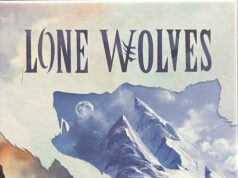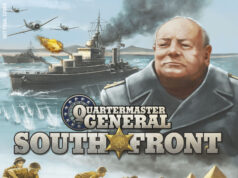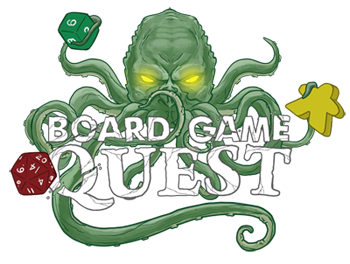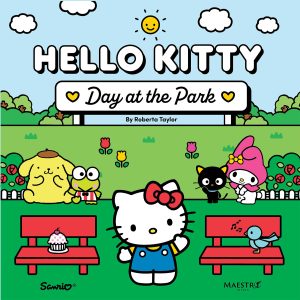 I admit that I’m a long-time Sanrio fan and being able to experience the aesthetic cuteness of Hello Kitty in board game form was the main thing that drew me to this game. I suppose that’s the power of IP in board game themes, isn’t it? However, don’t let the presence of branding deter you from trying out these games because some of them might become your next go-to option for game night. I was pleasantly surprised by Hello Kitty: Day at the Park so read on to see if it might be for you!
I admit that I’m a long-time Sanrio fan and being able to experience the aesthetic cuteness of Hello Kitty in board game form was the main thing that drew me to this game. I suppose that’s the power of IP in board game themes, isn’t it? However, don’t let the presence of branding deter you from trying out these games because some of them might become your next go-to option for game night. I was pleasantly surprised by Hello Kitty: Day at the Park so read on to see if it might be for you!
It’s a tile placement game for 2-4 players that takes about 30 minutes to play. The best experience is with four players for greater interactivity.
Gameplay Overview:
In this game, you’ll be collecting items to complete adventure cards and score points. Items are acquired by placing matching tiles and moving your character to spaces with the items you want. Character cards and attraction tokens allow you to take special actions and gain advantages throughout the game.
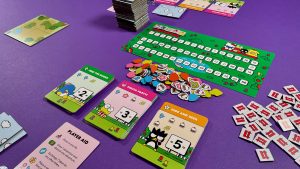
On your turn, you will place one park tile from your hand, move your character up to three spaces orthogonally, turn in items to complete adventure cards, draw one park tile, and replace your completed adventure cards, and at any time during your turn, use your character card or attraction token actions.
The main challenge during gameplay is to line up artwork when placing tiles in such a way that you collect items to help you complete adventure cards. If you match the item on your park tile placement with another tile’s item, you collect that item. On the other hand, if you match the color of the item on your park tile with another tile’s item color, you have the choice of collecting either item.
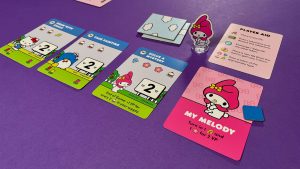
The additional challenge in this game is to navigate around the park in such a way that you strategically bump, or don’t bump, into another player on a tile. This is known as a “high five” and not only moves the other player one space but potentially gives you both an attraction or allows you to refresh your nap token. Attractions let you use special actions like moving to any space, gaining items, trading items, choosing new park tiles, or getting wild items. Nap tokens are used for tracking the special action of your character card, which is a player’s asymmetrical power during the game.
When someone draws the last park tile, each player gets one more turn, and then the game ends. Each player counts up any extra points from face-up scoring bonuses in their completed adventure card pile, and the player with the highest score wins. Ties are broken by the number of completed adventures, followed by the most items left.
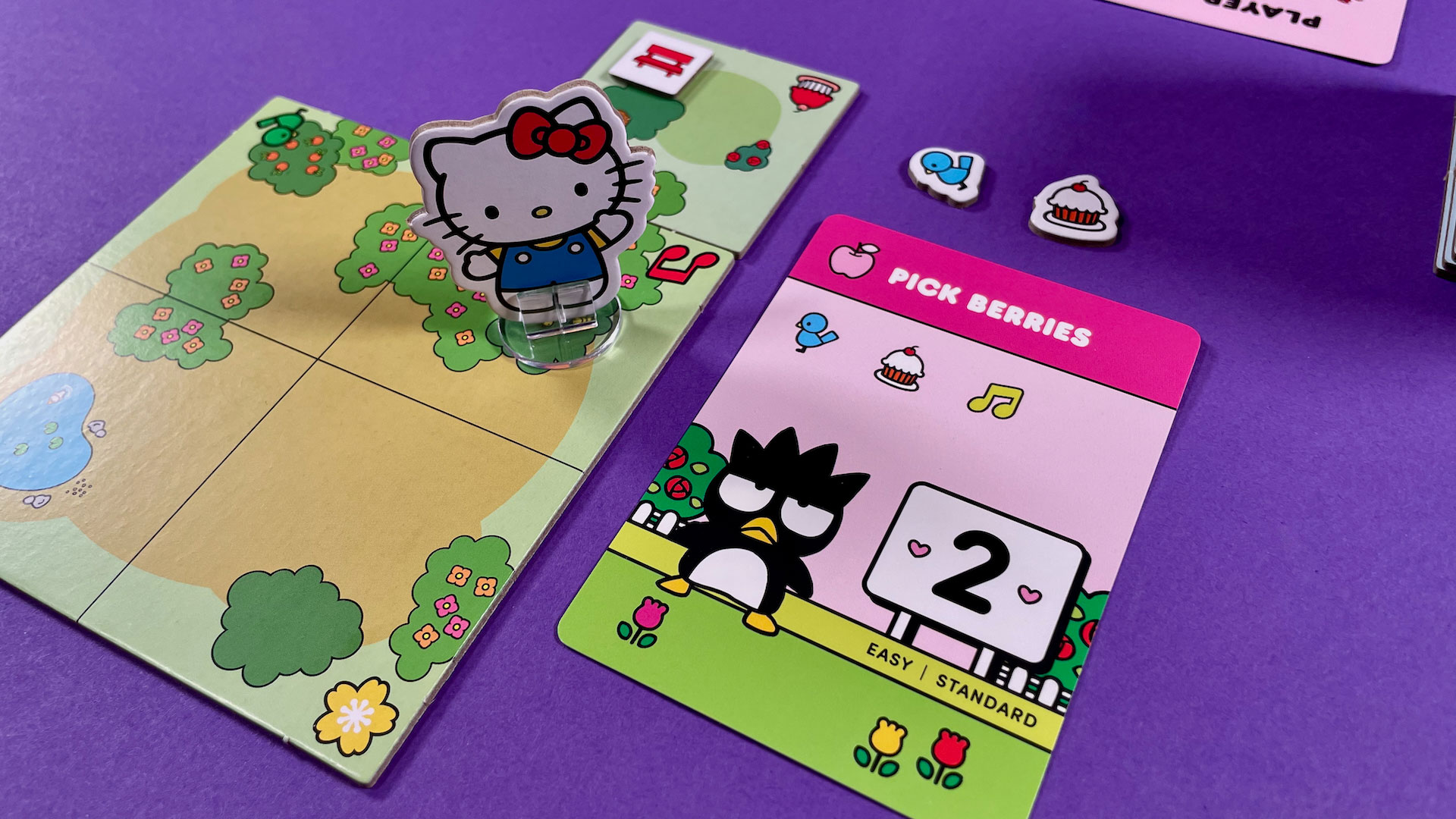
Game Experience:
Hello Kitty: Day at the Park really won my heart over with both the cute aesthetics of the components and the titles of the adventure cards in the game, like “Chase Lightning Bugs”, “Water Balloon Fight”, and “Enjoy A Bubble Tea”. I was slightly disappointed in the lack of thematic thought in assigning items to complete certain adventure cards, for example, “Dance Competition” requires four Birds, one Cupcake, and one Music Note… in what world would you need the birds for a dance competition? Regardless, there’s something about being rewarded for hoarding items that really appeals to me, and this game gives you every opportunity to do just that.
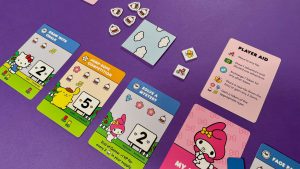
The adventure card categories themselves allow players to hone in on gaming approaches that fit best with their style or their current standing in the game. Easy scoring bonuses focus on turning in extra items, medium scoring bonuses focus on leftover items at the end of the game, and hard scoring bonuses focus on completed adventure types. This means both short-term thinkers and long-term thinkers will feel comfortable choosing their own path to gaining points in this game.
When evaluating the integration of the theme into this game, I was also disappointed about the character cards lacking some kind of unique power based on their personality. I understand that in a casual game, you can’t really make the powers too strong or too complicated, but at least give my baby Badtz-Maru something grumpy to do.
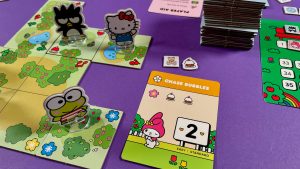
Like many tile placement games, the tile deck also functions as the game clock, and for how casual the gameplay is, I felt that the time investment was just right. The park tile count is dependent upon how many players there are in the game, and for all of the little issues I have with this game, they at least got the game timer down perfectly.
Unfortunately, from the get go if you’re used to relying on opening a rulebook and going through rules one page at a time, this rulebook is poorly written. I definitely recommend that someone read through it once to understand the general gameplay concepts before trying to teach others. Learning at the table in real time didn’t work well for us because of the ambiguity of language and terms in the book, as well as inconsistent language in the player aid. We also found that while you can play as your favorite Sanrio character, there wasn’t much emphasis on using the asymmetrical powers to gain an advantage. It’s a nice option to have, but it didn’t feel necessary in the gameplay loop.
Final Thoughts:
With a cute Hello Kitty and friends theme throughout all the components and a satisfying gameplay loop for item hoarders, this game is made for players who are interested in a quick and casual tile placement game with a relaxing aesthetic. Interested players should be aware that many of the resources and their corresponding adventure cards will not make much sense, but it is adorable at its core. However, if you are a seasoned player looking for a challenge or a specific reason to pick one Sanrio character over another, this is not the game for you. This game may also be difficult to jump into for players who rely on a well-written rulebook for a first-time playthrough.
Final Score: 3 Stars – Join Hello Kitty and friends to have the best day at the park full of adventures in this tile placement game.
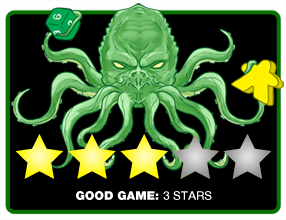 Hits:
Hits:
• Cute thematic cards and tiles
• Satisfying gameplay loop for hoarding
• Comfortable race against the clock
Misses:
• Poorly written rulebook confuses new players
• Inconsistent player aid language
• Not enough emphasis on asymmetrical powers









